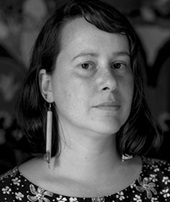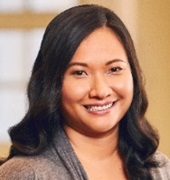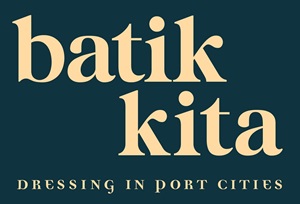Demystifying batik Belanda
Developments in batik history in the 19th century, imitations, and other influences from abroad
In the 19th century many things happened within batik. The demand for batik grew rapidly after the end of the Dutch East India Company, which brought a stop to the import of Indian textiles. Batik turned out to be a useful technique to imitate patterns of the Indian cloths that were worn throughout the archipelago. The interest in batik also grew outside of the former Dutch East Indies (now Indonesia). In Europe, batik was bought by collectors to be shown in museums and at colonial exhibitions. Cotton-printing factories started producing copies – imitation batiks – to be shipped back to Indonesia, where they came be be called “batik Belanda”. In response to these imitations, the batik cap (stamped batik) market blossomed on Java. The batik cap could easily compete with these Dutch imitations, leaving the European cotton-printers baffled as to why their cheap, mass-produced imitations (the earliest fast fashion, you might call them) would not sell.
It was not only the batik cap industry that flourished at this time. Batik tulis (hand-drawn) was made in the finest quality at the end of the 19th century. The European cotton companies shipped printed textiles and also fine woven blank cotton cloths. These machine woven cottons, combined with the Javanese canting, made it possible for the batik makers to create much more detailed batiks at the end of the 19th century.
After this short inspiring global history, Bolk will dive further into what the European influence on Javanese batik actually was, how it has been misinterpreted by European scholars in the past, and how we can right some colonial wrongs.
Speaker

Sabine Bolk is a Dutch artist who has been exploring batik since 2009. The inspiration doesn’t only come from the technique, but from the language of the patterns and the philosophy of batik. She writes on her blog
The journey to Batik about her discoveries, journeys, and research. In 2009 and 2016 Sabine went to Java to document batik making. In October 2019 she went to Indonesia to launch her current research project, which aims at re-writing the history of the (Indo-)European Influence on batik. Between 2019 and 2021 Sabine was a Research Associate at the Research Center for Material Culture in Leiden, researching the batik collections in Dutch museums and archives. In her current research she focuses not only on the maker but also the wearer. Sabine writes for various platforms, organises events, and gives talks, presentations, and workshops. Inspired by batik, she is dedicated to promoting, preserving, and protecting of batik.
Moderator

Noorashikin binte Zulkifli is senior curator for Islamic art at ACM. She developed the current Islamic Art Gallery as part of ACM’s revamp and curated the exhibition Ilm: Science and Imagination in the Islamic World (2016). Noora is currently working on the revamp of the Peranakan Museum, with a special interest in Muslim Peranakan communities. Before this, she was a curator at the Malay Heritage Centre in Kampong Gelam, Singapore’s historic Muslim quarter and port town. She holds an MA in Interactive Media and Critical Theory from Goldsmiths College. Noora’s research interests revolve around Islamic Southeast Asia with a leaning towards manuscripts and their related arts.
Image: Detail from a batik Belanda (Dutch batik) inspired by images seen in European fairy tales and magazines. "Slamet Pake" is urban slang of "Selamat Pakai", meaning "enjoy wearing". Kain panjang (detail). Central Java, Pekalongan, 1920s. Batik tulis. Cotton, synthetic dyes. ACM, T-0811.
Organised in conjunction with the exhibition
